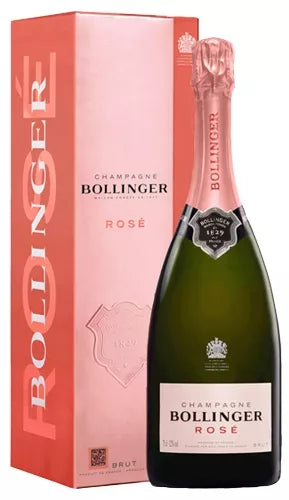For Bollinger's Rosé Variant, red wine is made annually from a portion of the Pinot Noir grapes. This red wine is then added to the rosé Champagne to give it its color and characteristics. Bollinger uses very few red grapes, only five percent, which gives it its full attack and a light pink color, characteristic of Bollinger's rosé Champagne.
A bold and idiosyncratic Champagne house
Bollinger is a distinctive Champagne house, which we can describe as a bit bold and decidedly unique. Founded in 1829, the house is one of the oldest producers in the region and strives for the very best quality every day. And we can only endorse that quality. The price of the Champagnes is a bit higher than that of other Champagne houses, but that's because Bollinger uses only the very best grapes. Furthermore, the Champagnes are aged considerably longer than required by most other houses.
To achieve this quality, Bollinger relies on sustainable viticulture. Between 2005 and 2010, half of the vineyards were planted with various grass varieties. In addition, all weeds are removed by hand. This combination has resulted in an 85 percent reduction in pesticide use. Furthermore, no artificial fertilizers have been used since 2005. Bollinger uses ultra-lightweight tractors and, for some vineyards, even the traditional horse and cart method.
The Bollinger House also produces superb red wines, such as the legendary Côte aux Enfants, in Aÿ. Since Bollinger Rosé was founded in 2008, the Poirier Saint-Pierre and Montboeuf plots in Verzenay have been cultivated in the same style as the Côte aux Enfants plot to complete the production.
A long maturation for this Bollinger Rosé
The Champagne is aged for a full thirty months in Bollinger's cellars, twice as long as required. But Bollinger does this precisely to create its own style of Champagne, and they've more than succeeded! The color is a soft pink with a purple shimmer. The aroma reveals abundant red fruit such as strawberries, raspberries, and cherries. And let's not forget the peach and roasted nuts at the back of the nose. The taste is truly beautiful, with its soft mousse (bubbles) and ripe notes of fresh red fruit. We also detected hints of wild berries and grapefruit on the back of the tongue. A classy rosé Champagne, that's all we can say.
